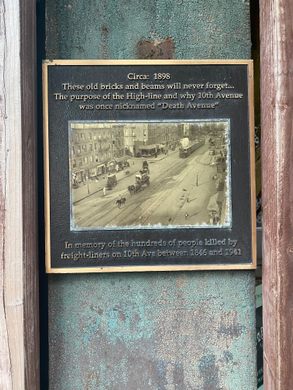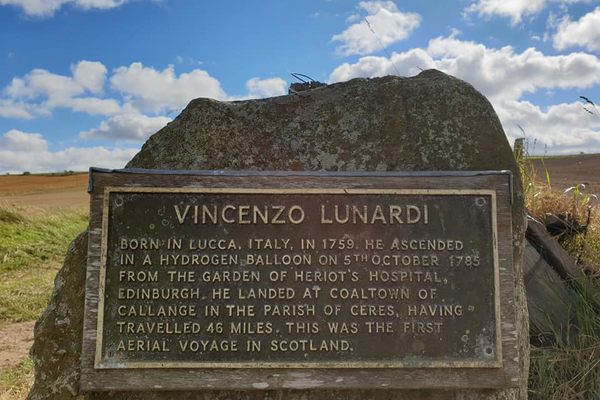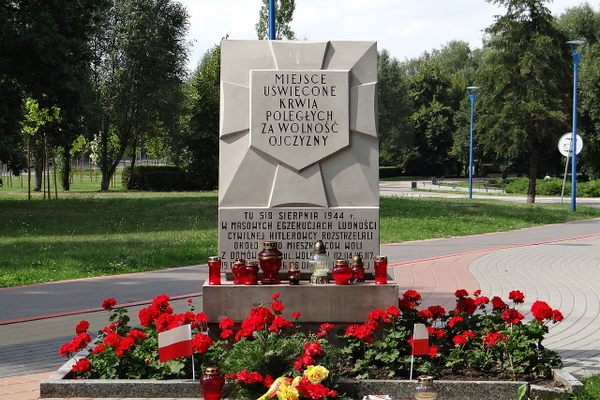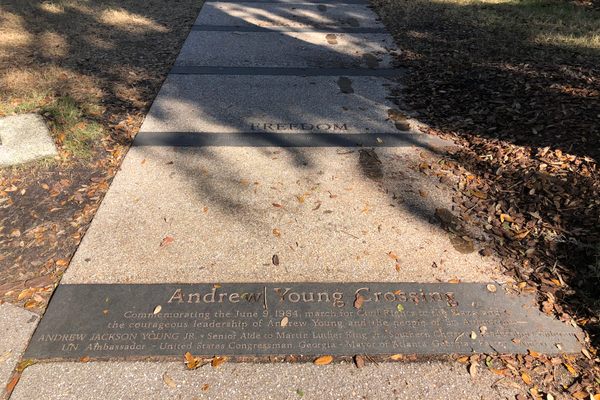Death Avenue Plaque
Manhattan's deadly West Side railroad, which killed hundreds of New Yorkers, is remembered by this simple plaque.
Hidden on the side of an old brick building on 10th Avenue and 29th Street is a curious and mostly overlooked little plaque. Dwarfed by the vast building sites that are currently dominating Manhattan’s West Side around the new Hudson Yard project, the plaque commemorates those who died and were mangled here. For this was once known as Death Avenue.
Quite incredibly, a full-size railway line once ran down the middle of 10th and 11th Avenues. With no barriers, fences or platforms, these steam-powered juggernauts plowed down the West Side of Manhattan amidst the bustling foot traffic, hansom cabs and early motorcars.
The lovingly detailed plaque features a period photograph of this astonishing site, the steam locomotive running at street level surrounded by tenements, horses and children. It reads, “These old bricks and beams will never forget…In memory of the hundreds of people killed by freight-liners on 10th Ave.” The Death Avenue line circled back on 11th Avenue, with another operating on the East Side of Manhattan on 4th Avenue. Long before the subway lines and the elevated railroads, these deadly engines killed and mangled pedestrians by the dozens, with public outcry coming from the citizens of Hell’s Kitchen, Chelsea, and the West Village, which largely fell on deaf ears.
Operated by the Hudson River Railroad, at one point the company, in one of the more peculiar chapters in New York history, hired actual cowboys from the West to ride their horses in front of the trains waving a red flag to warn passersby. These so called “West Side Cowboys” couldn’t prevent the continuing fatalities and protests. In 1894, one Willie Lennon, who lost a leg to the trains, protested by lighting a bonfire on the tracks. In 1908, after the death of seven-year-old school boy Seth Low Hascamp, 500 school children marched against the train that had acquired the chilling name “the Butcher.”
By 1908 it was estimated that some 436 New Yorkers had been killed by the trains. By 1929, the city agreed to elevate the railroad, beginning work on what is now the popular tourist attraction known as the High Line. Thousands of visitors everyday walk along the repurposed, once-abandoned railway line, with little idea of how it came to be.
The somber plaque can be found on the brick wall of a charming restaurant and brewery on 10th and 29th, quite fittingly called, “Death Ave.”























Follow us on Twitter to get the latest on the world's hidden wonders.
Like us on Facebook to get the latest on the world's hidden wonders.
Follow us on Twitter Like us on Facebook